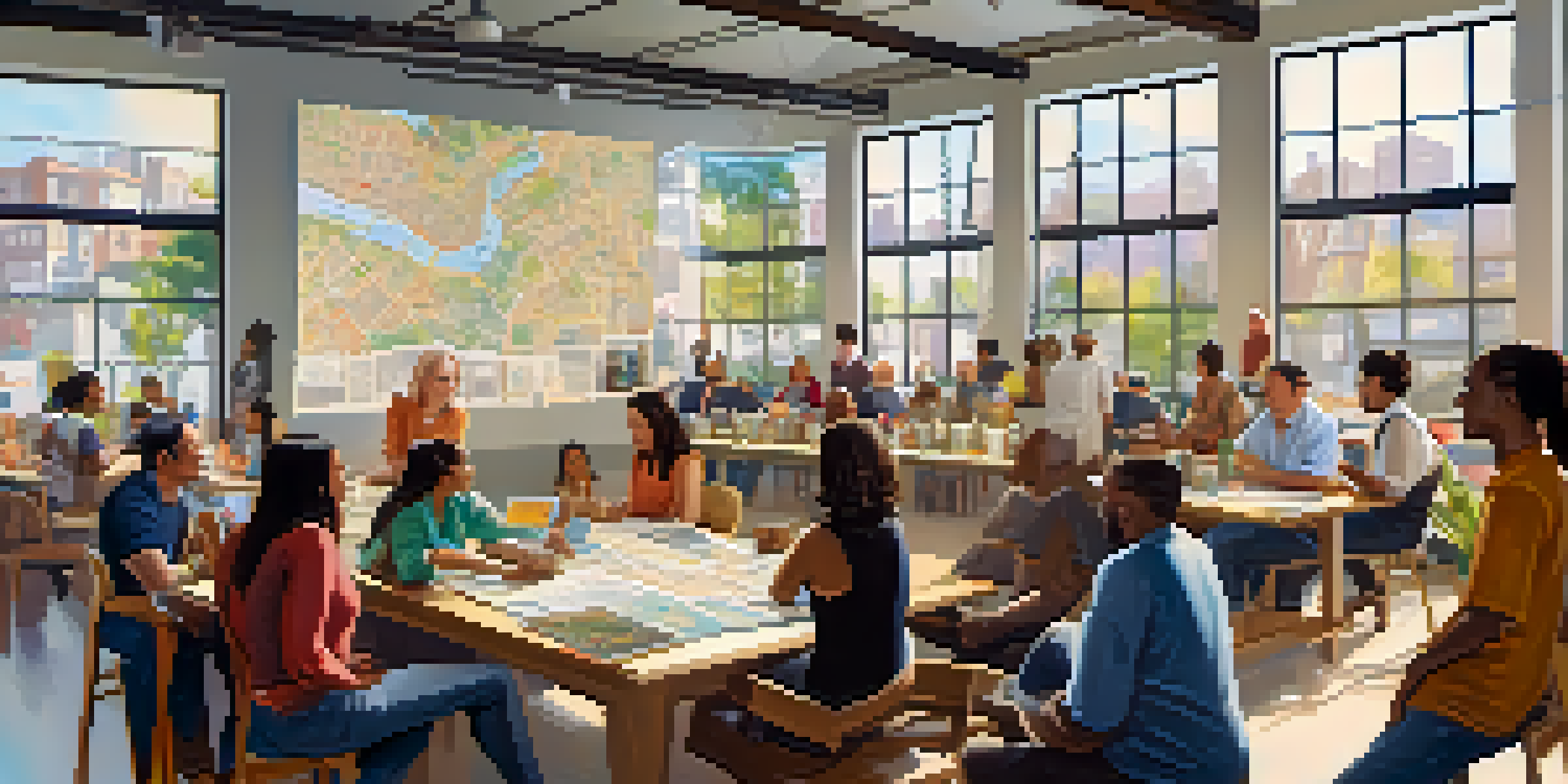Barriers to Public Engagement in NYC Urban Planning Processes

The Importance of Public Engagement in Urban Planning
Public engagement is essential in urban planning as it ensures that the voices of the community are heard and considered. When residents participate, they can influence decisions that directly affect their lives, from housing to transportation. This democratic process not only fosters trust but also leads to more sustainable and effective urban development.
The public has a right to participate in decisions that affect their lives.
However, engaging the public in New York City’s complex urban planning processes can be quite challenging. Many people may feel overwhelmed by the technical jargon often used in planning discussions, or they may not know how to get involved. This disconnect often results in a lack of participation, which ultimately undermines the planning process.
For urban planners, the challenge lies in making these processes inclusive and accessible. Implementing strategies like community workshops or online forums can help bridge the gap between planners and the public, fostering a collaborative environment that benefits everyone.
Complexity of Urban Planning Processes
Urban planning in NYC is inherently complex due to its dense population and diverse needs. Various stakeholders, from city officials to private developers, must collaborate, often leading to competing interests and priorities. This complexity can discourage public involvement, as residents may feel their input won’t make a difference.

Moreover, the layers of bureaucracy can make it difficult for the average person to navigate the planning process. Zoning laws, environmental reviews, and public hearings can all seem daunting, creating a barrier for community members who want to engage. Understanding these processes requires time and effort that many may not have.
Public Engagement Enhances Planning
Involving the community in urban planning ensures their voices are heard, leading to more sustainable and effective development.
To combat this complexity, planners can prioritize transparency and provide clear, straightforward information. Simplifying the language used in public documents and offering resources can empower residents to engage more meaningfully in the planning process.
Socioeconomic Barriers to Engagement
Socioeconomic factors play a significant role in public engagement. Residents from lower-income neighborhoods may have less time or resources to participate in planning meetings, particularly if they need to prioritize work or family obligations. This imbalance can result in a skewed representation of community needs in urban planning decisions.
Community engagement is not just a process; it's a commitment to listen and respond to the needs of the people.
Additionally, transportation barriers can hinder participation. For instance, if public meetings are held in locations that are not easily accessible by public transit, those without cars may struggle to attend. This can lead to a disconnect between planners and the very communities they aim to serve.
Addressing these socioeconomic barriers requires innovative solutions, such as offering virtual participation options and scheduling meetings at convenient times. By actively considering the needs of all community members, urban planners can create a more inclusive space for dialogue.
Cultural and Linguistic Barriers
New York City is a melting pot of cultures and languages, which can both enrich urban planning processes and present unique challenges. Language barriers can prevent non-English speakers from fully engaging in discussions about local development. Without translation services or bilingual materials, these residents may feel excluded from crucial conversations.
Moreover, cultural differences can influence how communities perceive and engage with urban planning. Some cultures may have different expectations regarding authority and participation, making it essential for planners to be culturally aware and sensitive. Failure to consider these factors can lead to misunderstandings and further disengagement.
Overcoming Barriers to Participation
Addressing socioeconomic, cultural, and technological barriers can significantly improve public engagement in urban planning processes.
To foster inclusivity, urban planners should prioritize hiring diverse staff and providing materials in multiple languages. Creating culturally relevant outreach strategies can also help ensure that all community voices are represented in the planning process.
Perceptions of Ineffectiveness
One significant barrier to public engagement is the perception that input will not lead to meaningful change. Many residents have experienced situations where their feedback appears to be ignored or dismissed, leading to disillusionment with the planning process. This skepticism can result in decreased participation and a lack of trust in planners and local government.
When people believe that their voices do not matter, they are less likely to engage in future discussions. This cycle of disengagement can perpetuate a gap between planners and the communities they serve. It’s crucial for urban planners to demonstrate that public input genuinely influences outcomes.
Regularly communicating the impact of community feedback can help counteract this perception. By sharing success stories where public engagement led to tangible changes, planners can rebuild trust and encourage more widespread participation.
Technological Barriers to Participation
In our increasingly digital world, technology can be both a bridge and a barrier to public engagement. While online platforms offer new ways for residents to participate in planning discussions, not everyone has equal access to technology. Low-income households or the elderly may struggle with digital tools, limiting their ability to engage.
Furthermore, technological literacy varies among different demographic groups. Some residents may feel intimidated by online meetings or digital surveys, leading to feelings of exclusion. This can create a divide in participation levels between those who are tech-savvy and those who are not.
Building Trust Through Transparency
Regular communication about the impact of community feedback helps rebuild trust and encourages ongoing participation in planning discussions.
To ensure equitable access to engagement opportunities, urban planners should provide multiple avenues for participation, including in-person meetings and phone options. Investing in community technology training can also empower residents to engage more confidently in the digital realm.
Strategies for Improving Public Engagement
Addressing the barriers to public engagement in NYC urban planning requires a multifaceted approach. Planners can implement strategies such as outreach campaigns that educate residents about the importance of their input. This can help demystify the planning process and encourage more people to participate.
Creating a welcoming environment for discussions is also vital. This can include holding meetings in community spaces that are familiar and accessible, as well as providing food and childcare to make attendance easier. When people feel comfortable and valued, they are more likely to engage in the process.

Finally, continuous feedback loops can help maintain momentum. Planners should regularly update the community on how their input is being used and what actions are being taken as a result. This transparency can foster a sense of ownership among residents, encouraging ongoing participation.